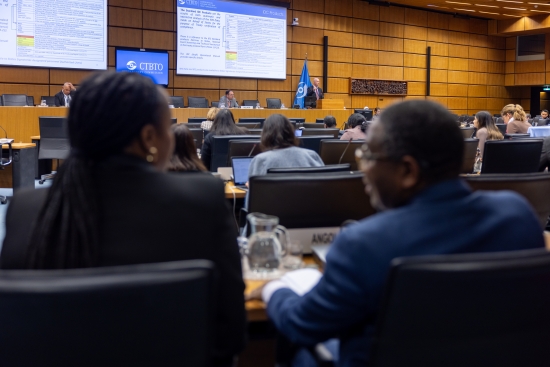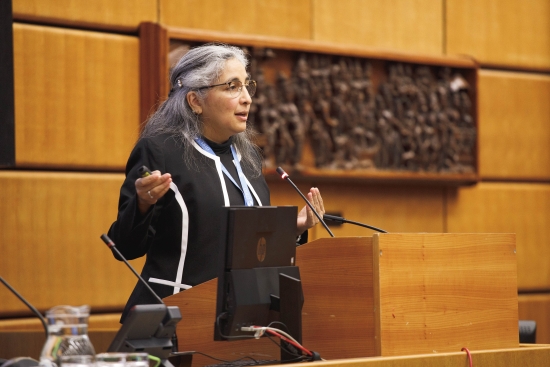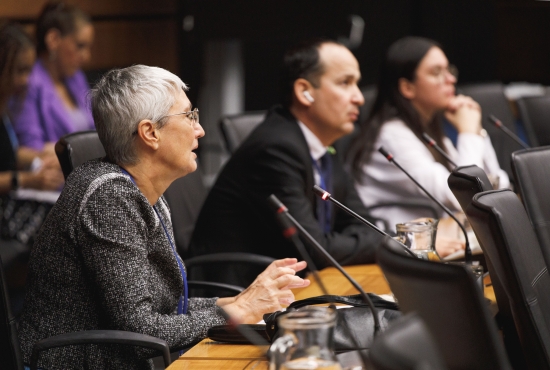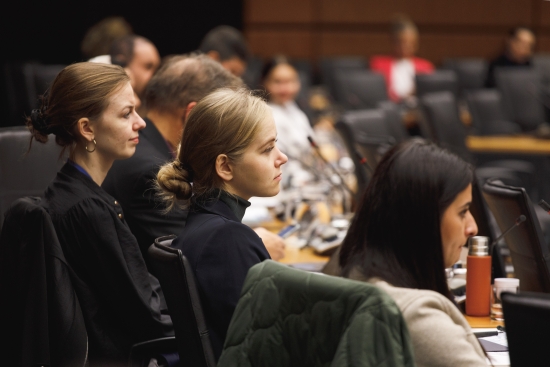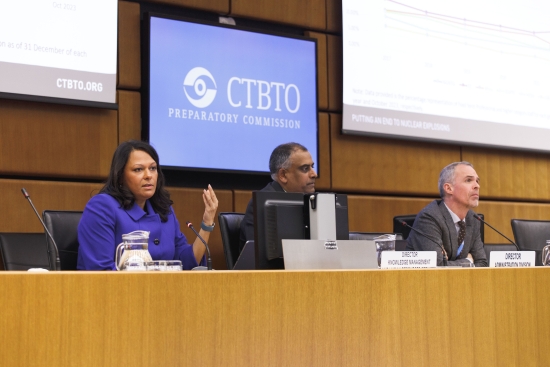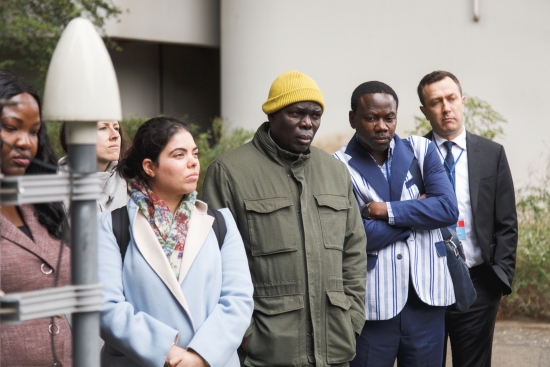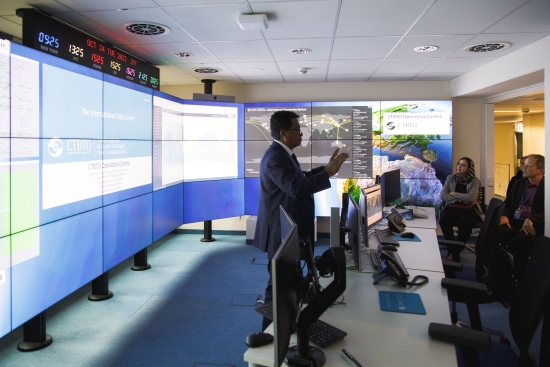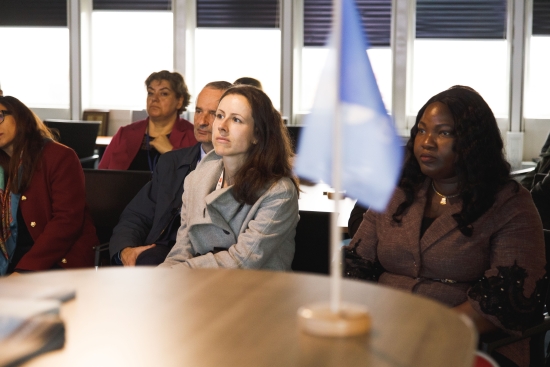Enhancing diplomatic engagement: CTBTO's seminar on the Treaty and its mission
The Comprehensive Nuclear-Test-Ban Treaty Organization (CTBTO) hosted a seminar at the Vienna International Centre (VIC) on 24 October, welcoming over 60 accredited diplomats who cover the CTBTO as part of their work.
The event began with opening remarks from Executive Secretary Robert Floyd, who explained that the programme, parts of which were translated into all CTBTO languages, aimed to enhance diplomats' understanding and expand their knowledge about "our precious Treaty, the Comprehensive Nuclear-Test-Ban Treaty (CTBT), and the mission of our Organization."
The seminar included presentations by the CTBTO's senior managers and technical experts on all aspects of the Organization’s work.
An overview of CTBTO’s work
Joseph Ballard, coordinator of the Legal and External Relations Division, provided a broad perspective on the CTBTO and its policy-making organs. He delivered his presentation in both English and French, in line with the Organization's commitment to multilingualism.
Uday Dayal, Director of the Division of Administration, and Deepti Choubey, Director of Knowledge Management and Human Resources Services, then delivered their respective talks on the administrative and personnel aspects of the CTBTO.
Choubey reaffirmed the Organization's commitment to gender parity and geographical representation, stating, "We encourage States Signatories to support the CTBTO's efforts to recruit more women and bring technical posts to the attention of qualified candidates... to spread the word."
Diplomats also had the opportunity to learn about the three technical elements of the CTBT's verification system. Xyoli Pérez Campos, Director of the CTBTO's International Monitoring System (IMS) Division, explored the IMS and nuclear test detection in her Spanish-language presentation.
Discussing seismic monitoring, she emphasised, "What we at the CTBTO perceive as data is noise and sounds to others. The interpretation of this data is what interests us and allows us to make progress in our collective knowledge."
Gerhard Graham, programme and project coordinator, offered an overview of the International Data Centre (IDC), which receives, processes, and distributes IMS data.
Finally, Franz Ontal, chief of the training Section, discussed the deployment of an On-Site Inspection (OSI), which is the last verification component of the CTBT. Once the Treaty enters into force, States Signatories will be able to request an OSI to gather further evidence on the ground if the global monitoring system detects a potential nuclear test explosion.
Among the audience were diplomats with varying levels of knowledge about the CTBTO and its mandate.
Louise Fluger Callesen, Deputy to the Permanent Representative of Denmark in Vienna, has been covering the CTBTO for over five years. She expressed, "For those of us who have been here longer, we have picked up some of this knowledge over time. But this is much more structured… What struck me was the detailed technical information about how the four technologies operate and the functions of the IDC."
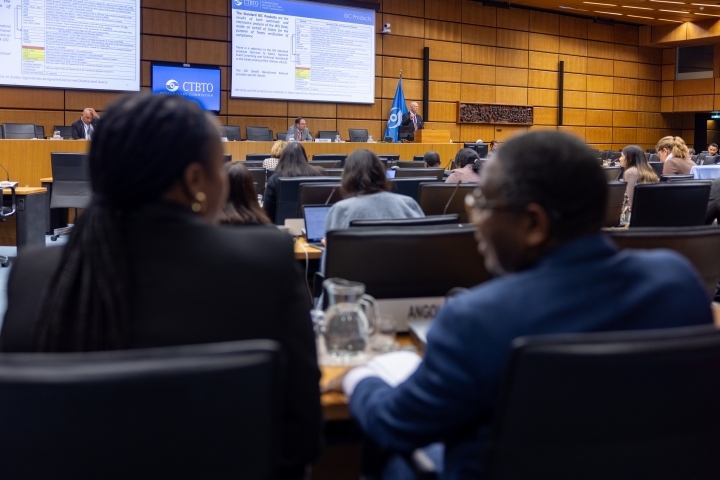
Session on workings of International Data Centre (IDC)
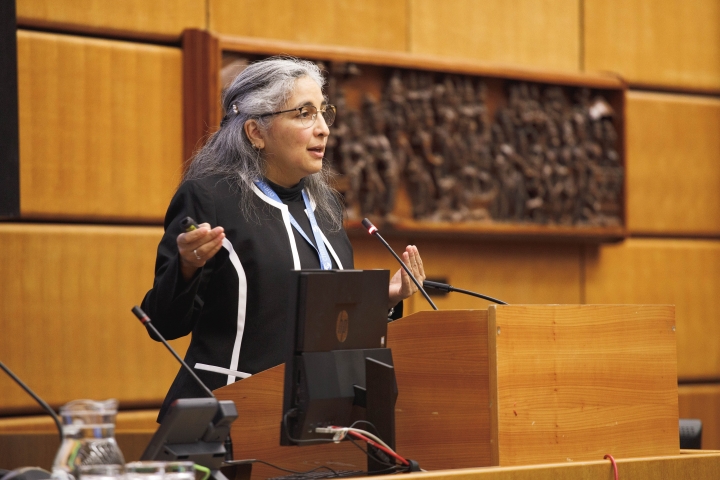
Director of International Monitoring System (IMS) Division, Xyoli Pérez Campos, delivering her presentation in Spanish

Seminar participant posing question after technical presentation

Group of diplomats visit radionuclide station on rooftop of Vienna International Centre (VIC)
A deep dive into the technical aspects of CTBTO’s work
In the afternoon, participants took tours of CTBTO's technical facilities. They visited the Operations Centre and observed live data streaming in from around the world. On the ground floor of the Vienna International Centre, they interacted with the OmniGlobe, a data visualisation tool that displays the four IMS technologies scanning the globe for signs of nuclear tests. The tour also took them outside, where they observed three different types of technology that contribute to the IMS network.
On the VIC's rooftop, the diplomats were shown the workings of a radionuclide and noble gas station, which serves as an equipment testing platform for innovations, upgrades, and engineering solutions, as well as for training purposes. They also had the opportunity to view examples of an infrasound array and seismic monitoring equipment housed on the grounds.
Anna Obretencheva has been covering the CTBTO for two months as Second Secretary at the Permanent Mission of Bulgaria in Vienna. She found the tours interesting because they allowed her to witness the system in action following the presentations.
After the tours, participants gathered in the boardroom for another informative session led by Mario Villagran Herrera, IDC's waveforms specialist. He explained how the CTBTO managed to detect the Democratic People's Republic of Korea's (DPRK) declared nuclear tests: "No nuclear test over a kiloton will escape our system."
The final presentation was delivered by Loipa Sanchez Lorenzo, chief of protocol and senior adviser, who spoke in English, French, and Spanish. Sanchez Lorenzo delved into the NDCs4All initiative, aimed at providing States Signatories with equitable access to CTBT data, which can also be used for civil and scientific purposes.
A call to action
The day concluded with the Executive Secretary's closing remarks, in which he called for collaborative efforts to make the Treaty legally binding: "The CTBT's entry into force would be an incredible legacy that we, the international community, can give to the people of this planet."
Following the seminar, diplomats had the opportunity to provide their feedback and perspectives through a survey. The questionnaire also inquired about the frequency at which such seminars should be held to keep diplomats informed and engaged with the Organization to contribute to the shared goal of ending nuclear testing.
31 Oct 2023

Senior External Relations Officer Charles Oko facilitating seminar
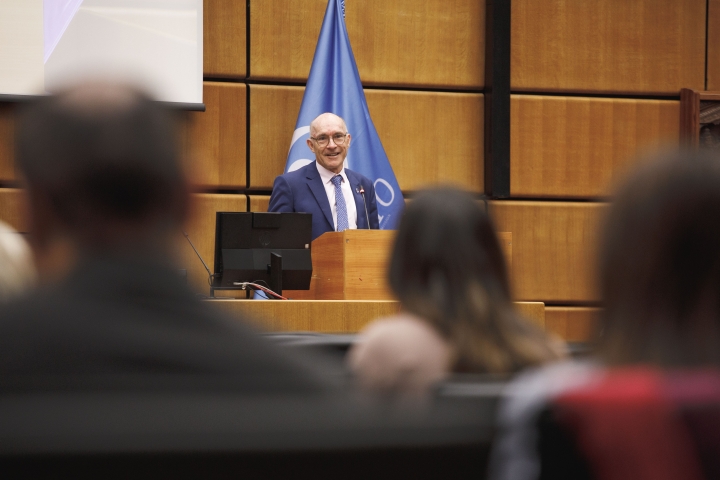
CTBTO Executive Secretary Robert Floyd delivering opening remarks
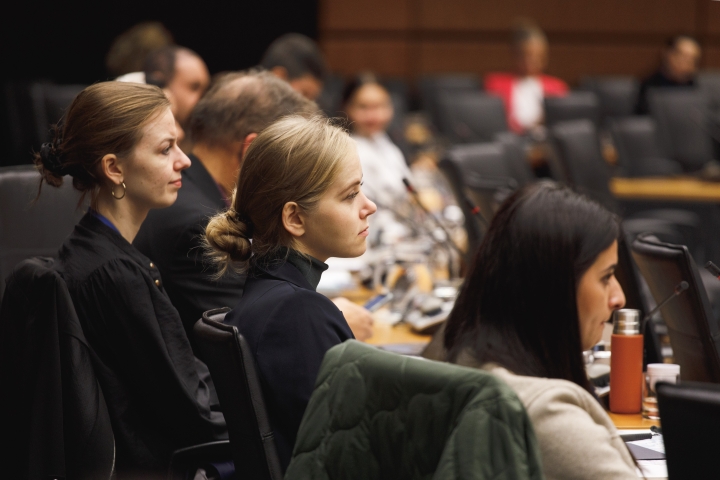
Participants listening to presentations
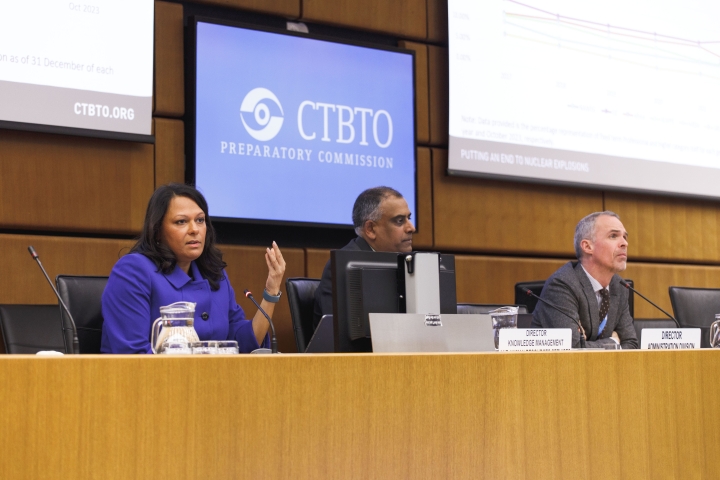
(Left to right) Director of Knowledge Management and Human Resources, Deepti Choubey; Director of Division of Administration, Uday Dayal; and Legal and External Relations Coordinator, Joseph Ballard

Tour of infrasound array and seismic equipment on VIC premises
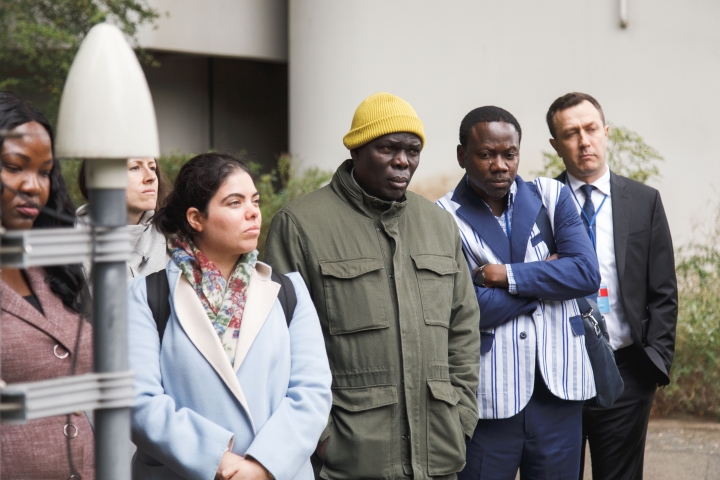
Diplomats listening to briefing about IMS stations

Chief of Section Monitoring and Data Analysis, Gerard Rambolamanana, giving presentation in IDC’s Operations Centre
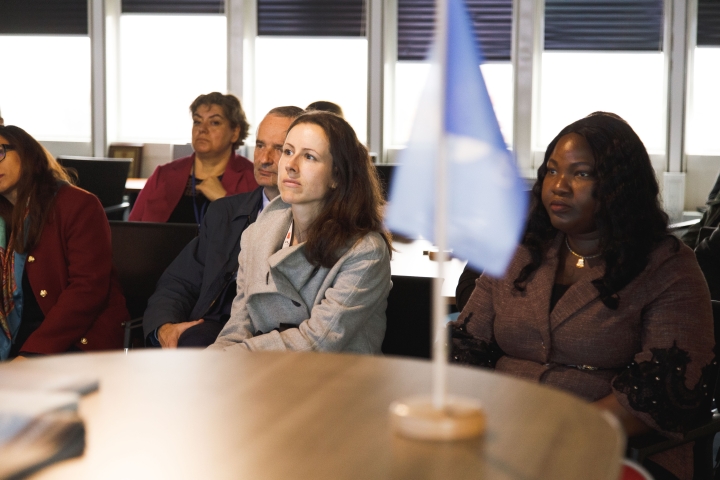
Participants listening to presentation in IDC Operations Centre

